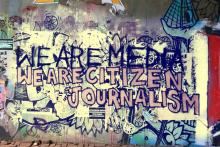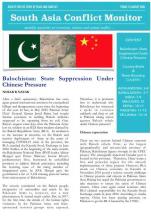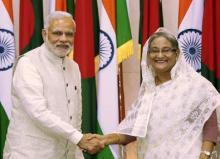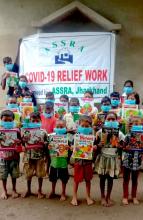-

Moon is in the news, again. The first human landing on the surface of the Moon was made possible on July 20, 1969, with the landing of Apollo 11. The last human landing on the Moon was during December 1972. The US now is proposing the next human landing on the Moon around 2024. Moon landing during the 1970s was more about the technological one-upmanship amongst the then superpowers, namely the US and USSR, but now in the 21st century, there is a visible change in the approach.
-

As of August 2020, there are 696.77 million internet users in India and over 10,000 registered publications as per the Registrar of Newspapers of India. Albeit, the wave of Citizen Journalism is witnessing tremendous growth in the country. Citizen Journalism is practised by people who are not professional journalists yet disseminate information via websites, blogs and social media.
-

Recorded history suggests that great powers invariably possess formidable indigenous military industries. In addition to economic and technological prowess and a relatively stable socio-political system, states that aspire to play global roles, also need to possess military-industrial ecosystems that are free from outside pressures at both war and peace times. Two Super Powers dominated post World War II scenario for decades. Rise of China and India with a relative decline of Europe led to an evolving multi-polar configuration.
-

Despite substantial progress in the peace talks between New Delhi and the armed groups of Nagaland over the last five years, there are still uncertainties over finalising a permanent peace agreement. The second round of negotiations over a peace agreement with the Naga insurgent groups, including the NSCN-IM (Isak-Muivah), was initiated by New Delhi in 2015. But that appears to be in trouble since October 31, 2019. A fresh informal attempt by the Union Government in this regard with the NSCN-IM in August 2020 in New Delhi also has not moved in the right direction.
-

India successfully tested an indigenously-developed hypersonic technology demonstrator vehicle (HSTDV) powered by a scramjet (supersonic-combustion ramjet) engine on September 07, 2020. This test is an essential step towards building next-generation hypersonic cruise missiles. The Defence Research and Development Organisation (DRDO) achieved a significant technological achievement when it flew a cruise vehicle at a hypersonic speed of Mach 6, for 20 seconds.
Understanding the Technology
-

Within weeks of its emergence in the Chinese city of Wuhan (Hubei province) in late December 2019, the novel Coronavirus has engulfed 213 countries and territories worldwide. Now infamous as Covid-19 Pandemic, the contagion has already killed over 850000 people (as of August 28, 2020). It not only poses significant risks to our physical and fiscal security (economy and public health) but presents a substantial threat to our national security. It is imperative and urgent for Nation-states to manage this health risk effectively.
-

After a brief quiescence, Balochistan has once again gained international attention for extrajudicial killings and disappearance cases since the beginning of this year. In fact, in May 2020, Pakistan Army Chief General Qamar Javed Bajwa had sought Iranian assistance in tackling Baloch militants suspected to be operating from its soil. Gen.
-

Several articles were published in the last week mostly speculative, indicating a doomsday scenario for India-Bangladesh bilateral relations.[1] Three developments were cited as signals of this new low in the bilateral ties.[2] First, one report appeared in Bhorer Kagoj, a Bengali newspaper in Dhaka, that Indian High Commissioner, Riva Ganguly Das was not granted a meeting with Prime Minister Sheikh Hasina, despite her trying for the last four months to have such a meeting scheduled.[3] This news that Indian High Commissioner was not given
-

Disasters are defined as severe disruptions in the routine functioning of society due to adverse events which cause serious harm to lives and livelihoods, economy, environment, and social and cultural resources. Based on this definition, the novel coronavirus disease or COVID-19 qualifies as a ‘disaster.’ Though COVID 19 has not caused damage to property or infrastructure, it has claimed many lives and created a serious disruption in the functioning of the society, thereby affecting almost everyone across the world.
-

The planet Mars is in the news again. Three missions are expected to be Mars-bound during 2020. Typically, it takes between six to nine months to reach Mars from Earth. The minimum distance from the Earth to Mars is about 54.6 million km. Mars launch windows are available only after a gap of 26 months and the present launch window is open till the third week of August. The first Arab space mission to Mars, an unmanned probe dubbed ‘Hope’ (Al-Amal in Arabic), successfully took off from Japan on 20 July 2020.
Paxton ported to drupal by DropThemes.in